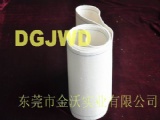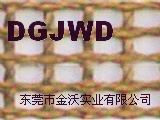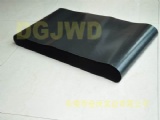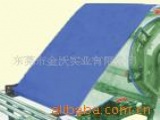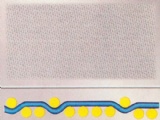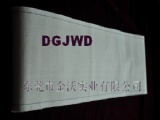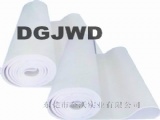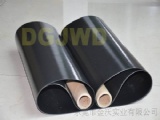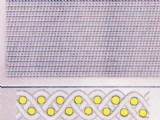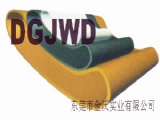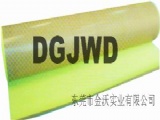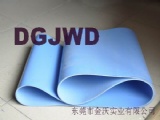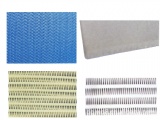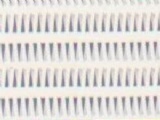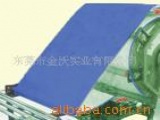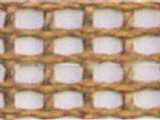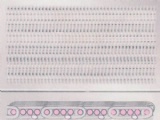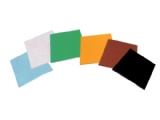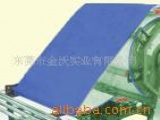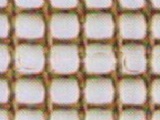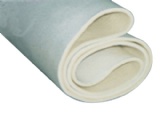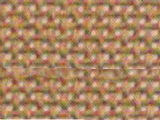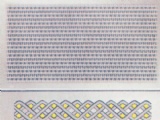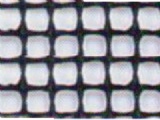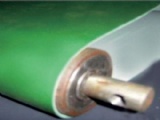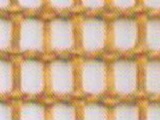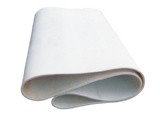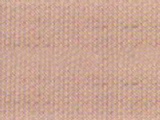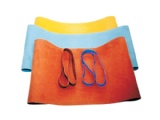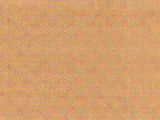Product series:
- Paper-making mesh blanket factory
- · Polyester dry mesh
- · Polyester forming mesh
- · Polyester helical mesh
- · Filtering mesh
Service call: 13924332788
Linkman: Mr.Zhou
TEL: 0769-22232968
FAX: 0769-22810618
WEB: www.dgjwd.com
Email:dgjwd@126.com
www.无缝硅胶带.com

Dongguan Jinwo Industrial Co., Ltd. was founded in 1995, and the Company mainly takes up industrial operation, and consists of such four industries as Dongguan Jinwo Seamless Silica Gel Belt Factory, Dongguan Jinwo Pasting Machine Belt Factory, Dongguan Jinwo Paper-making Mesh Factory, Dongguan Jinwo Teflon Co, Ltd in different fields. With the tenet of “win market with quality, development with science and technology and offer service for clients with good faith”, the products have won good remarks from vast clients, have obtained many patent product certifications, and every enterprise develops well.
Dongguan Jinwo Paper-making Mesh Factory is one key enterprise subject to Dongguan Jinwo Industrial Co., Ltd. The factory has its own workshops, owns more than ten imported and domestic braiding machines, warping machines, wind heat forming machines, splicing machines and other main equipments, equipments are advanced. The factory has exquisite process, technical strength is strong, product quality is reliable, and is one of paper-making mesh factories with stronger productivity in Guangdong Province.
The factory mainly produces multi-layer polyester forming mesh, single-layer polyester forming mesh, double-layer polyester forming mesh, plain-woven dry mesh, helical dry mesh, filtering mesh, pulp washing mesh and so on. Product quality is top grade, wins good remarks from vast clients. Especially the exported products have realized prosperous production and sale continuously for many years, have obtained many honors. Abiding by the corporate spirit of “user supreme, service first”, the factory expects to cooperate with new and frequent clients and create brilliant future jointly.
I. Polyester forming meshes
Four-harness wire single layer mesh
Standard mesh type of polyester forming mesh for paper-making. It has most extensive application for news print, offset print paper, chemical pulp top-grade paper, ultra-pressing print paper, lining board, semi-chemical corrugated paper and so on, it is the mesh usually used for medium and low speed paper machine.
Commonly used models:27254、25254
Eight-harness wire single layer mesh
Most wear resistant mesh in single layer mesh, long use life, more mesh markings. Mainly used for bag paper, kraft paper, lining board and corrugated paper.
Commonly used models:27358、25358
Double-layer mesh and 2.5-layer mesh
Double-layer mesh and 2.5-layer mesh are suitable for top-grade print paper, light-weight paper and board surface pulp, liming pulp, bottom pulp and so on.
Commonly used models:5616、6016、4516.
II. Polyester monofilament dry meshes
Three-harness wire monofilament woven dry mesh
Used for paper machine drying part and dying part of other industries. It has such characteristics as even, compact structure and so on. It is applicable for cultural paper, ultra press-polishing print paper, offset print paper and light-weight paper.
Commonly used models:22503.
Four-harness wire monofilament woven dry mesh
Its air permeation is higher than that of three-harness wire mesh, mesh is fairly thicker, even, size stability is fine, life is long. It is applicable to cultural, printing, writing, packaging and board, corrugated raw paper, and can also be used for drying part of other industries.
Commonly used models:22504.
III. Polyester helical meshes
It is applicable for paper machine drying part and dying part of dyeing machine, used as meshes for coal washing, horizontal mesh-type pulp washing machine and so on. It is convenient for use, has long life, easy for repairing, price is also lower than that of woven mesh.
|
Varieties of helical dry mesh |
Single ring specification |
Air permeability |
|
Large ring |
4×8cm |
16500-19500 |
|
Medium ring |
3.8×6.8cm |
16500-19500 |
|
Small ring |
3.2×5.2cm |
16500-19500 |
IV. Condensing meshes and filtering meshes
After filling to the helical mesh, air permeation reduces, mesh holes are compact, it can reduce loss of substance on the mesh, transverse stiffness becomes greater. They are mainly used for pulp washing, coal washing and sludge thickening. At the drying part of the paper machine, it is better used for the low air-permeation part.
|
Model |
Monofilament diametermm |
Air permeabilitym3/ m3h |
|
YLW3.8×7×1 |
0.68×0.9×0.8 |
13248 |
|
YLW3.8×7×2 |
0.68×0.9×0.8 |
10512 |
|
YLW3.8×7×3 |
0.68×0.9×0.8 |
3525 |
Use of polyester forming mesh
I. Characteristics:
1. Long use life, wearing resistant, low mesh consumption.
2. High fatigue strength, acid resistant, weak alkali resistant.
3. Light mesh marking, fine forming quality.
4. Light weight, convenient for transport, convenient operation for mesh covering
II. Selection:
1. Model: It shall select proper models based on equipments, processes, paper varieties, pulp materials and so on of the user with reference to the industrial standard promulgated the ministry-Polyester Forming Mesh for Paper-making.
2. Length: During usage, polyester forming mesh may be elongated by about 0.5%. As for length selection, it shall use the shortest size that can be installed to the machine for normal operation.
III. Installation:
1. Equipment inspection before installation to the equipment: carefully inspect whether paper-making equipment is complete or not, it is not allowed to have concave and convex, inclination, sharp burrs, sand grains and so on at the position contacting the mesh. Mesh guiding system shall be flexible, there shall not be adhered pulp block or twisted pulp.
2. Mesh inspection before installation to the equipment: Before usage of the polyester mesh, it shall assign special personnel to check the model and specification of the mesh. If there is no error, it can pave blanket at the clean and even floor of the operating side, place the mesh on the blanket so that the required operating direction the mesh is same to that of paper machine operation, open the mesh for quality inspection and maintain record. If there is quality problem, it is not allowed t install the mesh to the equipment for usage. It shall feed back the information to the polyester mesh manufacturer in time for treatment. In inspection, it shall keep prudent to prevent damage against the mesh.
3. Install the mesh to the equipment: Place the mesh at the correct position according to the operation direction of the paper machine, all of rollers shall be parallel to prevent lateral misalignment and folding of the mesh. Specific installation method can be selected based on the equipment conditions of each paper-making factory. In installation, there shall be one for command, other operators shall be subject to command of such person for achieve harmonious operation. It shall take and place the mesh lightly; hands and eyes are diligent to prevent damage against the mesh.
4. After the mesh is installed in place, tension the mesh slightly; add water for lubricating and operating for several loops. After feeding pulp, it shall focus on adjusting the mesh tensile force to normal degree. Tensile force for low-speed paper machine is kept at 3.0-4.0kg/cm, tensile force for high-speed and medium-speed paper machines is kept at 4.0-6.0kg/cm.
5. Provided with oscillating high-pressure water flushing devices:
a. Position of water spray pipe: Water spray pipe is installed outside the mesh and is adjacent to internal and external slewing rollers. Generally, the nozzle faces upward, it will greatly reduce the possibility that impurities in water block the nozzle and it can also reduce the possibility that water current impacts the friction surface and increase monofilament fibration.
b. Water spray pipe uses reciprocating pin-type nozzle, reciprocating travel is 30cm, frequency is 5-7 times/min.
c. Distance between the nozzle and the mesh is 200-400cm to acquire most efficient cleaning effect.
d. Water pressure: for medium and low speed paper machine, water pressure is controlled to be 10-15kg/cm2(2.0-2.5Mpa). If the cleaning effect for mesh is not good, it can boost water pressure properly, but it shall not exceed the limit of 40kg/ cm2(4.0Mpa). When the mesh stops rotation, it shall stop high-pressure water spray.
e. Spraying angle: If the speed is less than 400m/min, it can wash the mesh vertically with the nozzle. However, when the paper machine speed reaches 600m/min, it shall rotate the nozzle toward the mesh operation direction and yield a spraying angle that forms an included angle les than 90 degrees with the mesh.
IV. Operation:
1. Polyester mesh will yield natural elongation at the beginning of operation after startup, and its elongation rate is not greater than 1%; within the first 1-2 day of operation, it shall focus on adjusting the mesh tensile force up to requirement from time to time, and mesh length will become stable after operating for one week;
2. In operation, it shall conduct high-pressure sprinkling for the mesh in time. If the mesh is not cleaned well, it will affect dewatering and cause substances adhered to the mesh;
3. If the mesh dewatering is not fine, it can brush with banister brush or nylon brush with 10% alkali liquor or 5-10% acid liquor after stopping the machine. After cleaning is over, it shall clean thoroughly with clean water;
4. In operation, if it needs to repair the paper machine mesh pattern part, it shall dismount the mesh carefully. For re-installing the mesh, it shall install the mesh based on the original operation direction, reverse installation is not allowed. For long-term shutdown, it shall loosen the mesh, the suction system stops suction.
V. Storage:
1. Polyester forming mesh is made of macromolecule material, high temperature and high moisture are prohibited, and it is stored in normal temperature and in dry environment.
2. Storage temperature shall be bout 20℃. If temperature is too high or too low, it shall store in workshop 2-3 days before operation to avoid change of length;
3. Storage period of polyester mesh shall not be more than 6 months, otherwise it will not meet the ordered sizes.
VI. Prohibitions:
1. It is forbidden to pull, scratch, cauterize the mesh in duty and off-duty, it is forbidden tot cause hard folding fault;
2. It is forbidden to wear without water or cause ditches or slide with improper tensile force;
3. It is forbidden to use the mesh in the reverse side, otherwise will cause acute wearing;
4. It is forbidden to purge the mesh with moderate steam or brush the mesh with metal brush;
5. It shall not store the mesh in high temperature and high moisture, open flames are prohibited.
Operation of polyester dry mesh
I. Purpose:
Polyester dry mesh is the mesh woven with the raw material of polyester monofilament, it is mainly used for drying for paper in the paper machine
Based on organization, polyester dry mesh consists of one and a half layer and double-layer meshes; based on joint type, it consists of mesh with ends and without ends.
The user can select proper types and models for operation based on the equipment conditions and produced paper varieties.
II. Characteristics:
1. Long is more than three times of those of canvas and dry blanket.
2. High strength, good toughness, wearing resistant, corrosion resistant, stable specification and size.
3. Mesh surface is smooth and even, air permeation is fine.
4. Light weight, convenient for transportation, operation and usage.
III. Operation method:
1. The paper machine that originally use canvas and dry blanket can use polyester dry mesh without upgrade. If conditions are available, it can replace the original blanket expanding roller to be flat roller and remove the original blanket drying cylinder.
2. Dry mesh without ends is ring type. Before installation to the machine, it shall firstly dismount the internal guide roller, uncoil and thread in the dry mesh along the operation position, and then install the internal guide roller to the machine again, adjust the tensile force of the mesh to 2-3kg/cm2 before starting up and operating the machine.
3. Dry mesh with ends is belt type. Both ends of the mesh are connected with helical rings. For installation to the machine, introduce it from one side, the connecting wire is threaded in from one side to the other side. If it is difficult to achieve successful threading-in, it can thread in by section, but it shall cut the connecting wire, both ends of the connecting wire shall be connected into the interface to prevent disconnection.
IV. Repairing and washing of dry mesh and precautions:
1. At both sides of the dry mesh, there are two types-bonding-glued bonding or heat fusing. Bonding. During operation, if there is side loosening, it can shear the line end of loose end, and then fuse for bonding with electric ion.
2. It can stitch with line for small holes, local rupture and so on caused by hard injury in operation of mesh.
3. In operation, if there is fold mark and so on, it can iron evenly with electric ion, but temperature shall not be more than 150℃. It shall spray clean water toward the mesh surface to prevent aging.
4. If there is shutdown caused by power failure or other reasons, it shall immediately shut off the air valve and loosen the mesh to prevent local deformation and aging.
5. If there is local oil stain in mesh surface, it can brush and wash with gasoline or detergent, and wash the mesh with clean water.
6. During transport, storage, installation, overhaul and operation, it shall keep away from open flames and high temperature to prevent inflammation and aging of the mesh. In addition, it shall also prevent from friction against the sharp articles in order to avoid scratching the mesh body and reducing service life.

